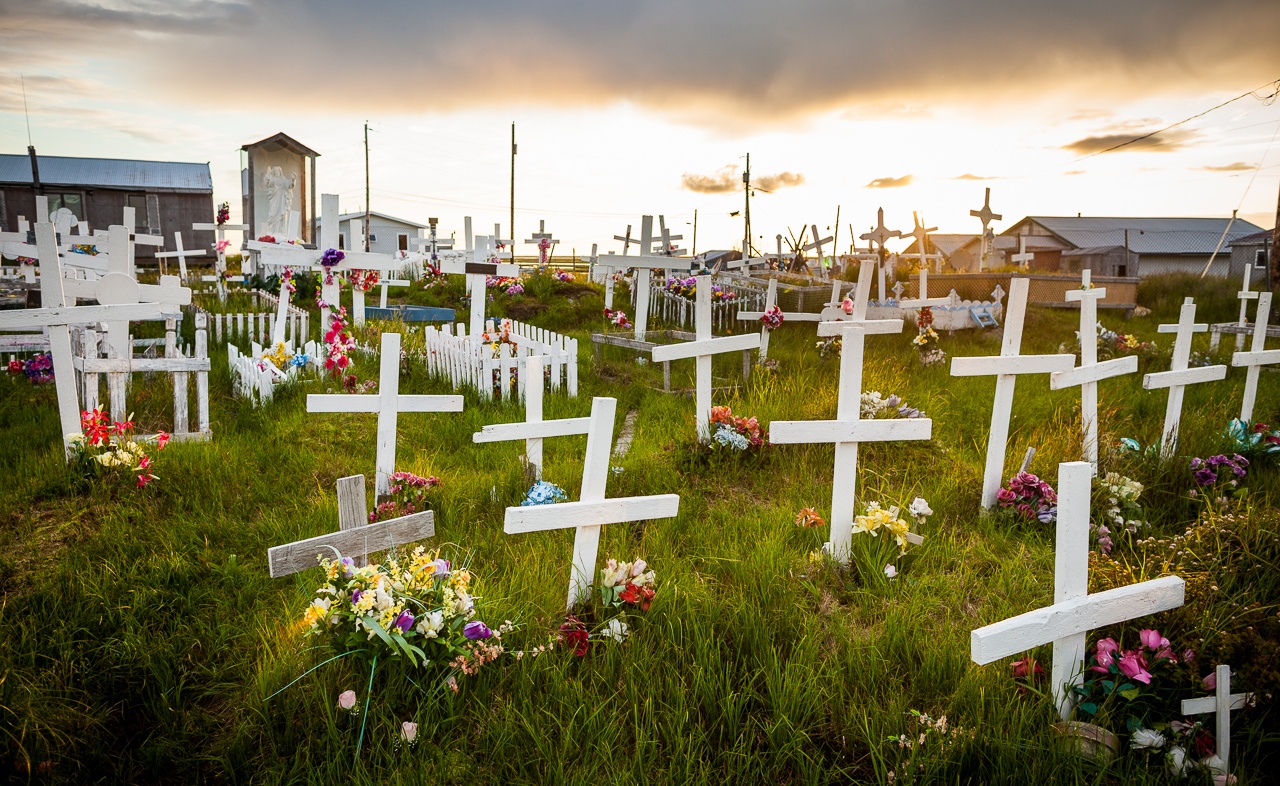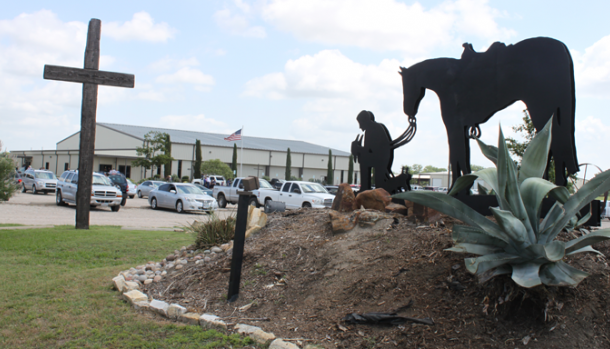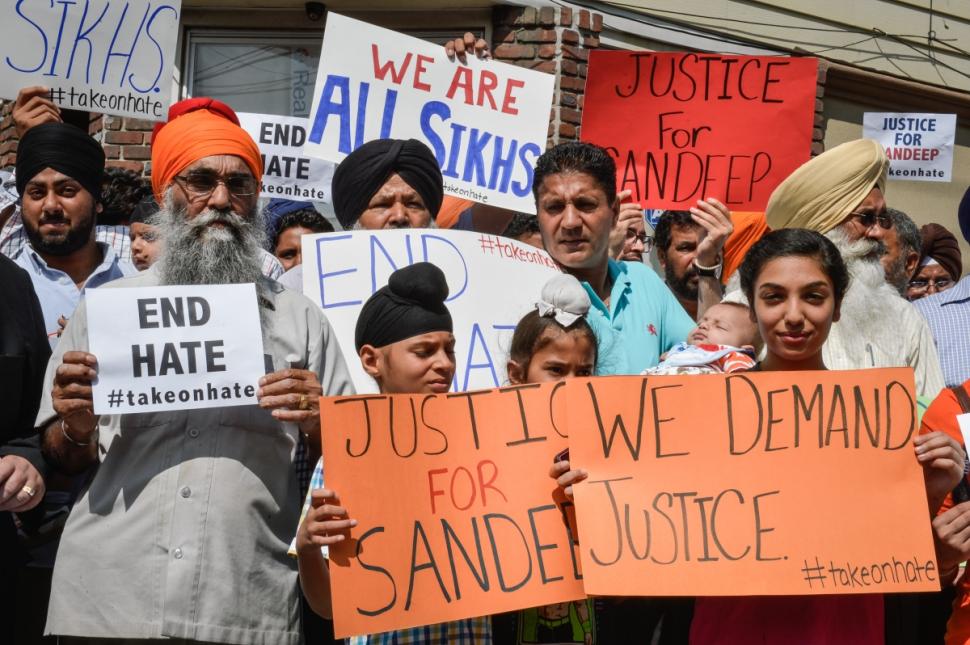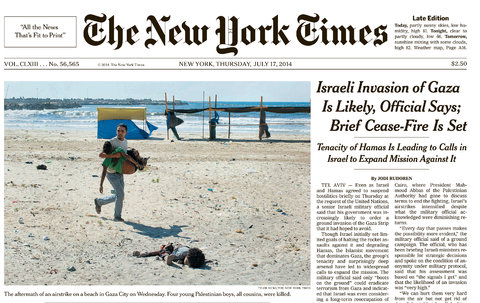Working our way from the local out, let’s start off with a few great articles by some folks who’ve contributed work to The Revealer recently:
“Ann Neumann: In Search of a Good Death” in Cosmologics. The Revealer‘s contributing editor and writer of the monthly column “The Patient Body,” Ann Neumann interviewed by Lewis West.
It’s clear that we’re not a secular nation; a particular brand of Christianity dominates our laws, politics, health care, and culture. But religion is particularly overt around the death bed, and it’s not just family members who resort to religious concepts when they watch a loved one die. It seems that, in our culture, religion often gives us the language we collectively find acceptable when discussing death and dying.
“John Michael McDonaugh and Brendan Gleeson on ‘Calvary‘” by Mary Valle in the Los Angeles Review of Books
MV: Religion is a complicated subject to say the least, but it occurred to me that maybe one of the hidden strengths of Catholicism is its acknowledgment of pain, suffering, and death, going back to the notion of religion ebbing away in Ireland. Father James suffers terribly in the film, but, as a religious man, he seems to accept it at an almost cellular level.
For more on “Calvary,” check out S. Brent Plate‘s review, “Calvary Won’t Set You Free” at Killing the Buddha.
“Where Have All the Cowboy Churches Come From?“ asks Maurice Chammah in Texas Monthly.
But looking around at the congregation in Ellis, it was clear that this church attracted more than the traditional rancher. In fact, it didn’t look much different from any suburban mega-church crowd, save for a few extra cowboy hats. As the number of literal cowboys in Texas dwindles, one begins to wonder, how do you grow a church based on a way of life that hardly exists anymore?
“Why Is the Mormon Church Getting Out of the Adoption Business?” by Kathryn Joyce in The Daily Beast.
As LDS Family Services told the Salt Lake Tribune, “It’s a different world for adoption.” And that’s not all bad.
There’s more about the fallout of the Hobby Lobby Supreme Court decision below, but first, “Thank you, Satanists” by Brook Wilensky-Lanford.
…a New York-based religious organization (although non-tax-exempt, because it doesn’t believe religious organizations should be), announced an ingenious response to the Hobby Lobby verdict. They have created a letter of exemption for women to show their doctors in hopes of getting out of the requirements of the “informed consent” laws now applied to abortion procedures in 35 states.
“The relentless trauma of covering Gaza” by Jared Malsin for the Columbia Journalism Review.
For journalists in war, bearing witness to horror and documenting atrocities are at the core of the job description. It is a task that forces reporters to the extremes of human experience and tests the endurance of even the most seasoned correspondents. For international journalists, it prompts vexing questions: When to stay and when to go? When do concerns about exhaustion override the imperative to capture the story? How to write and report in the face of overwhelming violence?
Meanwhile, in New York City:
“An Orthodox Brooklyn Clothing Line Shared a Photo of a Woman in a Hijab, and Their Customers Flipped Out“ by Anna Merlan in The Village Voice‘s blog, Runnin’ Scared.
Mimi Hecht of Mimu Maxi tells the Voice, “We were definitely surprised by the negative reaction to the photo. It certainly is not the Jewish way to be attacking or hateful. At the same time, given high tensions between Jews and Muslims right now, we totally, totally understand the visceral reaction. But truthfully, its exactly at this time that such a collaboration means the most.”
“New York Sikhs demand feds’ involvement after alleged hit-run ‘hate’ attack” by Jenna O’Donnell, Thomas Tracy, and Corky Siemaszko in The Daily News.
The Sikh community turned the heat up Tuesday on the NYPD to find the lead-footed bigot who ran down a Queens businessman with a pickup truck after yelling, “Go back to your own country, Bin Laden!”
“God Lives on Lemon Street“ by Scott Chesire in Harpers.
When I was a small Jehovah’s Witness boy living in Queens, Bethel was Oz-like for me. I mean that with all the awe, utter hopefulness, and mythic fear with which Dorothy and her friends had approached that magical city.
And Killing the Buddha has an excerpt from Scott Chesire‘s new novel, High As The Horses’ Bridles.
While in the rest of the country:
“Satantic Temple Wants Religious Exemption from Anti-Abortion Laws“ by Philip J. Victor for Al Jazeera America‘s The Scrutineer blog.
An organization known as the Satanic Temple says the controversial Hobby Lobby Supreme Court decision allows it to invoke a religious exemption from state-mandated informed consent laws on abortion, which it says result in the distribution of “scientifically unfounded” and “medically invalid” materials to women.
“Family Behind Hobby Lobby Has New Project: Bible Museum“ by Alan Rappeport for The New York Times.
The development of a Bible museum has long been a dream of the Oklahoma-based Green family, which has built Hobby Lobby into a $3 billion company in which its religious beliefs infuse every aspect of the business, from the music played in its stores to being closed on Sundays.
“Another White House Iftar, Another Ramadan Without My Brother” by Mariam Abu-Ali in The Huffington Post.
As many Muslims sit down tonight to break their Ramadan fast at the annual White House iftar, a tradition started by President Bill Clinton, I am thinking about my brother Ahmed spending his 11th Ramadan away from my family.
President Obama, just as he has done every year since coming to office, will probably include in his remarks stories of successful Muslims making significant contributions to American society, attempting to show how interwoven Muslims are in the fabric of this country. What he won’t mention, and what most in the room would rather not think about, is the growing number of Muslims who are victims of the U.S government’s ruthless persecution of Muslims that includes spying, torture, and unfair trials.
I believe that my brother is one such victim.
“Examining the Growth of the “Spiritual but not Religious” by Mark Oppenheimer in the New York Times.
At the very least, we might conclude that “spiritual but not religious” isn’t necessarily vague or wishy-washy. It’s not nothing, although it may risk being everything.
A 1989 interview with long-time NPR reporter Margot Adler who died in July. Adler was a Wiccan priestess interviewed here about Pagan practices, politics, and communities.
“The Leftovers: confusion and doubt mirrors my religious journey“ by Sarah Jones in The Guardian.
From A Thief In The Night to Tim LaHayes’s Left Behind series, representations of the Rapture in America have traditionally been promoted by Christians who read the Book of Revelation literally. It’s an interpretation I know well: I grew up fundamentalist in the Appalachians. The Rapture – and the fear and anticipation I felt for it – seeped into the bones of my faith.
“The Rise and Fall of the Potato King“ by Josh Nathan-Kazis in The Jewish Daily Forward.
My grandmother grew up in a big house on a hill in Fort Kent, Maine, a few hundred yards from the Canadian border. The house had a porch and a turret and, in the bathroom, a Jewish ritual bath. My grandmother’s mother was a religious fanatic. Her father, Jake Etscovitz, was the Potato King.
Though he lived all his life at the edge of the wilderness, the Potato King dressed for Fifth Avenue. He wore a suit in his potato fields, to his car dealership, to his music store, to his gas station, and to the tiny synagogue down the street from his house. Today, on a wall at the car dealership he once owned in town, there’s a picture of him looking like Bugsy Siegel in three-piece pinstripes and a tall fedora. It’s 1928, and he’s standing in an open garage door with eight men in mechanic’s coveralls. His hands are in his pockets, his hips pushed out, a little grin on his face. He looks ready to eat the world.
He didn’t.
“How the Baha’i Faith became South Carolina’s second-largest religion“ by Jennifer Berry Hawes in The Post and Courier.
Of Baha’i teachings, few are as sacred as the belief in the oneness of humanity, regardless of race or class or gender. In South Carolina, that oneness brought Baha’is together in a Jim Crow era, when blacks and whites couldn’t so much as drink from the same water fountain, much less worship in each other’s homes.
Yet, that is just what they did.

“Simple wooden crosses mark the grave sites at an indigenous cemetery in Chefornak, Alaska.”
Photo by Loren Holmes for The Atlantic
“When Global Warming Kills Your God” by Adam Weymouth with photos by Loren Holmes in The Atlantic.
An amicus brief filed by the American Civil Liberties Union elaborated further:
A Yup’ik fisherman who is a sincere believer in his religious role as a steward of nature, believes that he must fulfill his prescribed role to maintain this ‘collaborative reciprocity’ between hunter and game. Completely barring him from the salmon fishery thwarts the practice of a real religious belief. Under Yup’ik religious belief, this cycle of interplay between humans and animals helped perpetuate the seasons; without the maintaining of that balance, a new year will not follow the old one.
But now the seasons are out of balance, and the Yup’ik can’t stop hold the sea back. According to the U.S. Army Corps of Engineers, an estimated 86 percent of indigenous villages in Alaska will need to move within the next 50 years, at a cost of $200 to $500 million per village. Newtok is preparing to move to a new site, across the water to Nelson Island, but a struggle against the village leadership has recently stalled the relocation effort.
“The Great Calvinist Reawakening“ by Braillen Hopper in Religion & Politics.
But how did American Calvinists go from writhing in public in the eighteenth century to more buttoned-up forms of religious expression in the twenty-first? Why aren’t today’s young Reformed doctrine nerds still shouting glory through their tears and throwing their prized possessions into the flames? And what was American Calvinism, before it became a brainier, sterner alternative to “cheesy” popular evangelicalism?
Whilst in the world beyond…
“The enduring influence of the Crusades” by Nick Danforth for Al Jazeera America.
So instead of rehashing an old narrative 915 years after it happened, let’s consider the odd story of how the Crusades, in all their messy historical detail, became a lasting symbol for Muslim-Christian relations. Rather than look for overly precise political parallels in the 11th, 19th and 21st centuries, we should consider how selectively — and effectively — the language of holy war has been invoked throughout history, often to the mutual benefit of opposite sides in the same conflict. The way we talk about the Crusades tells us a lot more about the world we live in than the Crusades themselves could.
“A Threat to Cambodia’s Sacred Forests“ an Op-Doc by Kalyanee Mam in the New York Times.
The Chong people, who are considered Khmer Daem (or original Khmers), have lived in this valley for over 600 years. They grow rice, forage for roots and mushrooms, and fish in the streams and river. In March, a group of young monks traveled over 150 miles from Phnom Penh, the capital, to help them in their campaign to protect the forest, which they consider sacred.
“Church of England General Synod approves of female bishops“ by Andrew Brown in The Guardian
The Church of England has finally agreed that women may become bishops next year, breaking with nearly 2,000 years of tradition and ending 20 years of bitter compromises since women were allowed to become priests in 1994.
and “Church Founded in Sixth Century Has More Modern Views on Women Than Scalia“ by Andy Borowitz in The New Yorker.
“In recognizing that women are the equals of men, the Church of England has embraced a position that is centuries ahead of Scalia’s,” Davis Logsdon, a professor of religion at the University of Minnesota, said. “This is a remarkable achievement, given that Scalia was born in 1936 and the Church began in the late five hundreds.”
“FIBA [Féderation International de Basketball] forces India’s Sikh basketball players to ditch their turbans as Asia Cup” by Karan Madhok for his blog, Hoopistani.
Now, India finds itself in the Quarter-Finals with dreams to go even further. And both our big long-haired Sikh superstars will be an integral part of realizing that dream, with or without their turbans. But more importantly for their culture and for their beliefs, we hope they earn some respect to make the rest of the basketball world realize that it’s not Indians’ headgear they should fear; it’s their game.

“Two men are seen mourning at the funeral of a woman who died from stomach disease.”
Photo by James Nachtwey for Time
“The Rohingya, Burma’s Forgotten Muslims“ a photo essay by James Nachtwey in Time‘s Lightbox blog.
The U.N. estimates that 86,000 people, mainly Rohingya, have fled by boat in the two years since clashes erupted between the majority Buddhist and Muslim populations. In the 1980s, the all-Buddhist military junta stripped most Rohingya of their citizenship, claiming that they were recent immigrants from neighboring Bangladesh. But many Rohingya have lived for generations in Burma. The country is now ruled by a quasi-civilian government praised by the West for its reforms.
“Book by transgendered Roman Catholic consecrated maiden explains why God doesn’t hate you“ by Sean Meyer in the London Community News.
As the world’s first transgendered Roman Catholic consecrated maiden, Tia Michelle Pesando has many reasons for wanting to prove Why God Doesn’t Hate You, which is also the name of her new book.
More about Tia Pesando in “Call to religious life strong for transgender Londoner” from “CTV News London.
“Red Giant: An Interview with Shane Jones“ by Laura van den Berg in the Paris Review.
I’m always surprised when writers say they don’t believe in a god or religion but they believe in creating a world on two hundred pages using symbols. We’re all worshiping something.
And then, there is Israel-Palestine.
I’ll share here a few articles I’ve appreciated reading, but first, I encourage you to read these two lists:
The names of all of the Palestinians who have been killed in Operation Protective Edge.
The names and photographs of the Israeli soldiers who have died. The names of the Israeli civilians killed are in the list linked to above.
For those of you who feel like you have some catching up to do in order to understand what’s going on right now, Zach Beauchamp at Vox put together this impressive and helpful slideshow called “Everything You Need to Know about Israel-Palestine. ”
Josh Nathan-Kazis wrote about divisions within the young American Jewish Left in The Jewish Daily Forward: “J Street’s Gaza War Support Wins ‘Moderate’ Praise – But Alienates Some Backers.”
“I understand the strategy that J Street has adopted, and I think it’s fine to have an organization like J Street moving that strategy,” [Daniel] May said. “I also think that there’s a need for an approach that fits this moment.”
Rashid Khalidi and Nadia Abu El-Haj both weighed in on the civilian death toll in Gaza.
Khalidi‘s piece, “Collective Punishment in Gaza” appeared in The New Yorker,
What Israel is doing in Gaza now is collective punishment. It is punishment for Gaza’s refusal to be a docile ghetto. It is punishment for the gall of Palestinians in unifying, and of Hamas and other factions in responding to Israel’s siege and its provocations with resistance, armed or otherwise, after Israel repeatedly reacted to unarmed protest with crushing force. Despite years of ceasefires and truces, the siege of Gaza has never been lifted.
and El-Haj‘s, “Nothing Unintentional” was published by The London Review of Books.
There is no safe place in Gaza. There is nowhere to go. And there is nothing unintentional let alone moral about civilians being killed when there is a 100 per cent probability that an assault on a refugee camp or a crowded neighbourhood or city street will result in mass civilian casualties. The distinction between the intended and the unintended has lost all sense here.
From an Israeli perspective, novelist Etgar Keret had two thoughtful pieces in US media this last month. The first, “What to do when Israeli-Palestinian Peace Is Out of Reach” was published in the LA Times.
True, it’s more difficult to write songs about compromise, especially the kind my son and other kids can sing in their angelic voices. And it doesn’t have the same cool look on T-shirts. But in contrast to the lovely word that demands nothing of the person saying it, the word “compromise” insists on the same preconditions from all those who use it: They must first agree to concessions, maybe even more — they must be willing to accept the assumption that beyond the just and absolute truth they believe in, another truth may exist. And in the racist and violent part of the world I live in, that’s nothing to scoff at.
The second, “Israel’s Other War,” in The New Yorker.
At times it seems that there are two wars going on. On one front, the military is battling against Hamas. On the other, a government minister, who called Arab colleagues “terrorists” on the floor of the Knesset, and hooligans who intimidate peace activists on social media, jointly persecute “the enemy within”: anyone who speaks differently.
Sana Saeed writes about the pitfalls of attempting interfaith work in the region in “An Interfaith Trojan Horse: Faithwashing Apartheid and Occupation” for The Islamic Monthly.
This is, in its essence, what washing the occupation and apartheid clean actually is: to sanitize the narrative in which the oppressor becomes the oppressed or, at the very least, a relatable oppressor.
And this where what I will refer to as ‘Faithwashing’ comes in. Faithwashing is about changing the cause of the Israeli-Palestinian conflict (or, rather, Israeli occupation and ethnic cleansing of Palestine) from a mid-20th century Euro-American settler-colonialist project (that brought anti-semitism to the Muslim world) to a non-existent centuries long enmity between Jews and Muslims.
Lastly, I’d recommend reading Ray Filar‘s interview with scholar Judith Butler in Open Democracy: “Willing the Impossible: An Interview with Judith Butler.”
In fact in politics, sometimes the thing that will never happen actually starts to happen. And there have to be people who hold out for that, and who accept that they are idealists and that they are operating on principle as opposed to realpolitik. If there were no such ideals then our entire political sensibility would be corrupted by this process.
***
– Kali Handelman, Editor, The Revealer




